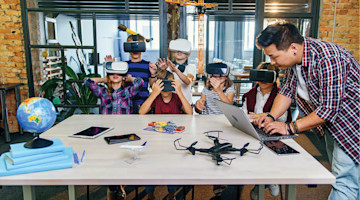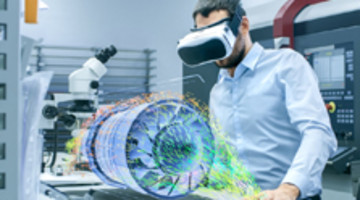Necessity is the mother of invention
The COVID-19 pandemic is creating a new normal for the next 12-18 months, most likely until a vaccine is widely available. To comply with new state, local, and industry regulations to mitigate potential health risks, manufacturers are implementing a wide range of safety protocols to protect employees at all levels. These include requiring employees to wear gloves, cleaning and disinfecting tools, spacing workstations six feet apart, minimizing the number of employees per shift, increasing the number of shifts per day, and staggering the start time of shifts. Domestic and foreign travel will also very likely decrease.
What has not yet happened are major technology changes or innovations in manufacturing operations themselves simply because it takes more than a few weeks for this type of change to happen. While we cannot predict the future with certainty – and it is still not clear how long or how broadly business activities will change as a reaction to the pandemic – we can delineate that some technologies seem poised to enter the manufacturing ecosystem in greater number and at greater speed than would have otherwise been the case.
Implementing social distancing and infection control measures will initially increase labor and materials costs due to smaller and staggered shifts and additional cleaning protocols. These added costs and requirements will serve to lower the financial threshold for businesses to adopt new technologies to squeeze every penny of efficiency out of existing operations and to enable remote communications in support of social distancing wherever possible. What did not seem cost effective six months ago becomes cost effective when these cost pressures and limitations (e.g., curtailing travel) are the new norm.
The low hanging fruit we see include:
Remote diagnostics, repair, and training
Augmented reality (AR) has several obvious opportunities in manufacturing for diagnostics and maintenance, repair operations, technical field support, and training. Any scenario where remote expertise can be substituted for travel and on-premises expertise at remotely distributed plants is a strong use case.
AR can be used for technical field support to diagnose, service, and repair even complex equipment, and libraries of recorded procedures can be accessed on site by AR-equipped technicians. For training, AR can very effectively guide a technician through learning new processes remotely. AR information can be delivered step by step in real time, and in context, it can be presented in both 2D and 3D digital assets and can be viewed without shifting attention away from a workpiece.
Maximizing OEE
The increased costs and resources that manufacturers will need to put toward social distancing and readjusted workforce strategies will concurrently put cost pressures on every other aspect of plant operations to maximize efficiency. By integrating analytics and cognitive automation applications into manufacturing operations, manufacturers will uncover opportunities for greater OEE, reduced downtime, higher quality and more consistent parts, proactive maintenance, reduced energy consumption, reduced transportation costs, and many other cost savings. The first step will be strategically determining what processes will yield the greatest returns.
To learn more about these technologies, read our white papers devoted to AR and Cognitive Automation.





